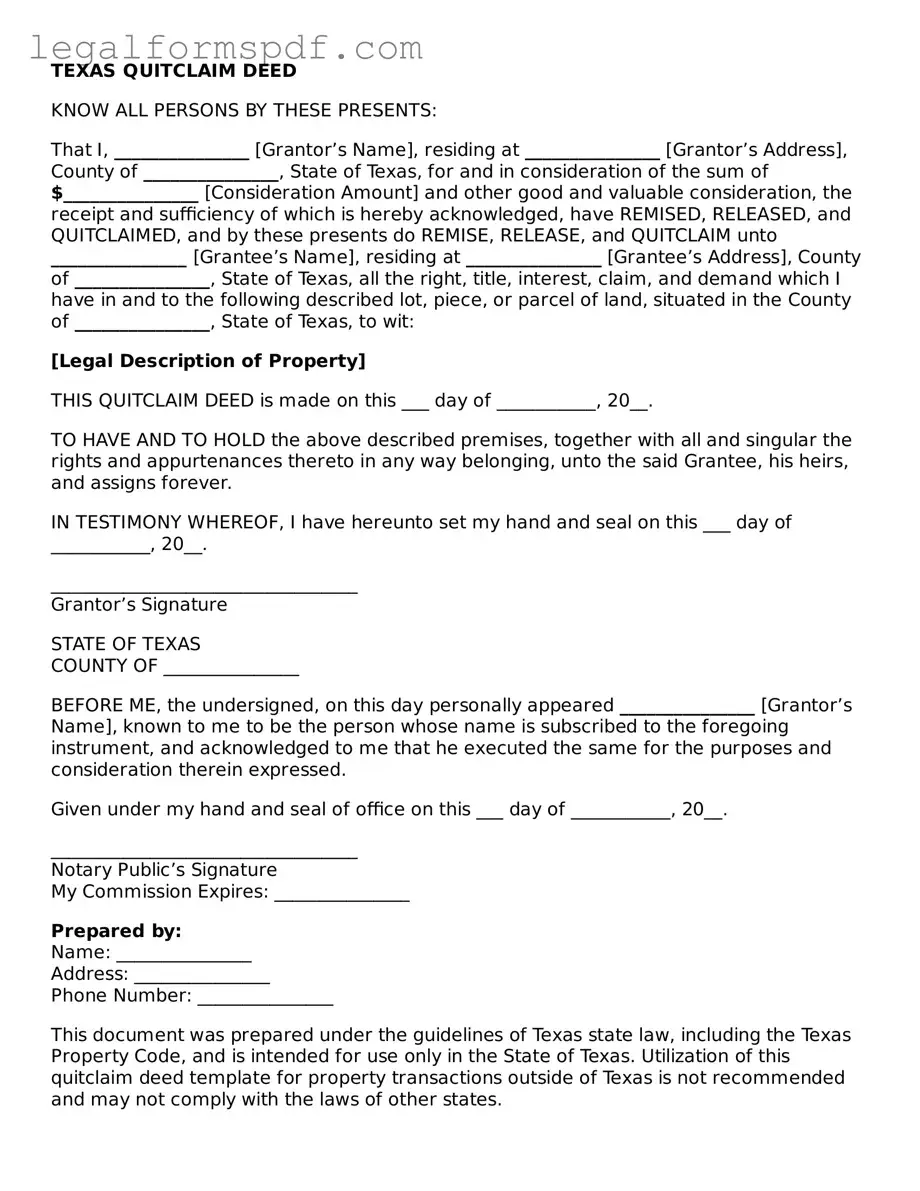TEXAS QUITCLAIM DEED
KNOW ALL PERSONS BY THESE PRESENTS:
That I, _______________ [Grantor’s Name], residing at _______________ [Grantor’s Address], County of _______________, State of Texas, for and in consideration of the sum of $_______________ [Consideration Amount] and other good and valuable consideration, the receipt and sufficiency of which is hereby acknowledged, have REMISED, RELEASED, and QUITCLAIMED, and by these presents do REMISE, RELEASE, and QUITCLAIM unto _______________ [Grantee’s Name], residing at _______________ [Grantee’s Address], County of _______________, State of Texas, all the right, title, interest, claim, and demand which I have in and to the following described lot, piece, or parcel of land, situated in the County of _______________, State of Texas, to wit:
[Legal Description of Property]
THIS QUITCLAIM DEED is made on this ___ day of ___________, 20__.
TO HAVE AND TO HOLD the above described premises, together with all and singular the rights and appurtenances thereto in any way belonging, unto the said Grantee, his heirs, and assigns forever.
IN TESTIMONY WHEREOF, I have hereunto set my hand and seal on this ___ day of ___________, 20__.
__________________________________
Grantor’s Signature
STATE OF TEXAS
COUNTY OF _______________
BEFORE ME, the undersigned, on this day personally appeared _______________ [Grantor’s Name], known to me to be the person whose name is subscribed to the foregoing instrument, and acknowledged to me that he executed the same for the purposes and consideration therein expressed.
Given under my hand and seal of office on this ___ day of ___________, 20__.
__________________________________
Notary Public’s Signature
My Commission Expires: _______________
Prepared by:
Name: _______________
Address: _______________
Phone Number: _______________
This document was prepared under the guidelines of Texas state law, including the Texas Property Code, and is intended for use only in the State of Texas. Utilization of this quitclaim deed template for property transactions outside of Texas is not recommended and may not comply with the laws of other states.
